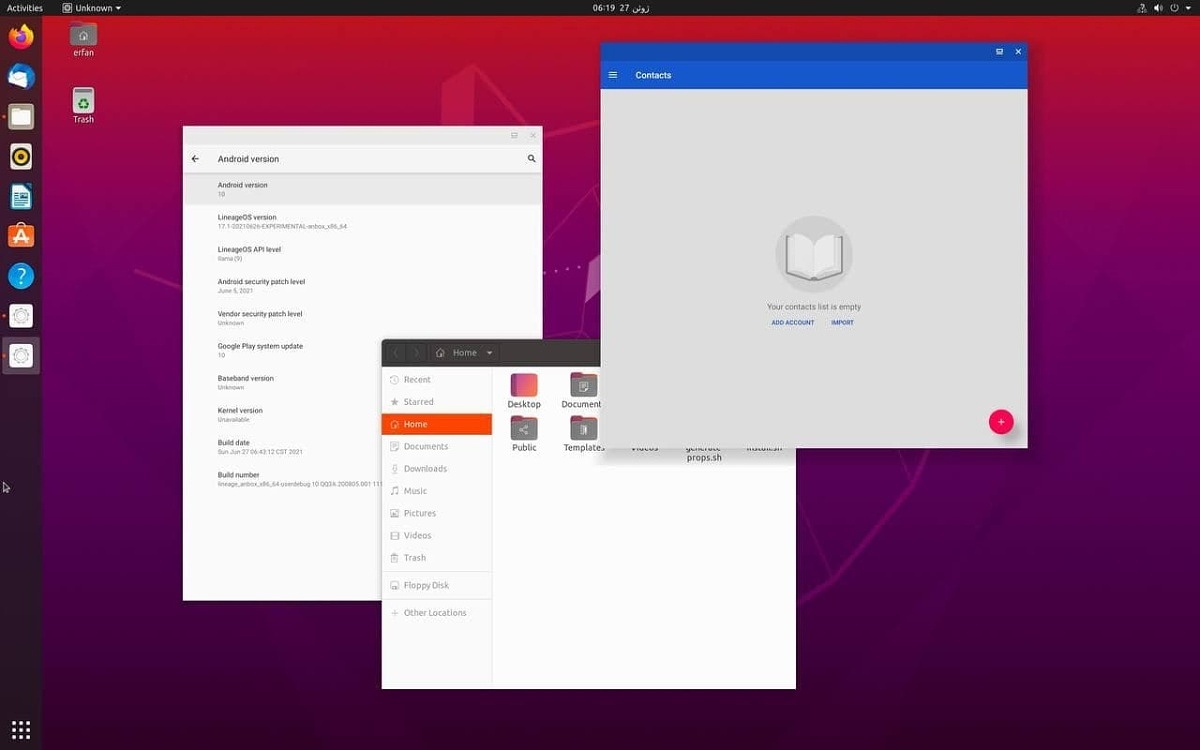
Definitely uOne of the features that is highly requested by Linux users is the power to make use of Android applications in its distribution My favorite is that even though there are a large number of methods to achieve this, many of them are based on the creation and execution of a virtual machine with the system, which is not the most effective when wanting a bi-directionality between Android and your distribution.
That is why today we are going to talk about the Waydroid project which has prepared a set of tools that allows you to create an isolated environment on an ordinary Linux distribution pTo load a full image of the Android platform system and organize the launch of Android applications with it.
About Waydroid
The project was previously called Anbox-Halium, a rebuilt version of Anbox that is designed to use more native hardware from the host device than Anbox, which means faster performance. The main goal of the project is to run Android applications on Halium-based Linux phones (Halium is similar in concept to the Android GSI, but for standard Linux), but it can also be run on any device with a Linux kernel.
The environment is built using standard technologies to create isolated containerss, such as namespaces for processes, user IDs, network subsystem, and mount points. The LXC toolkit is used to manage the container and to run Android on a normal Linux kernel, the binder_linux and ashmem_linux modules are loaded.
The environment is designed to work with a session based on the Wayland protocol. Unlike the similar Anbox environment, the Android platform provides direct access to the hardware, without additional layers. While the Android system image supplied for installation is based on the LineageOS project builds and Android 10.
Of the characteristics that stand out from Waydroid, the following are mentioned:
- Desktop integration: Android applications can run in parallel with native Linux applications.
- Supports placing shortcuts in Android applications in the standard menu and displaying programs in overview mode.
- Supports running Android applications in multi-window mode and styling the windows to match the basic desktop layout.
- For Android games, the ability to run applications in full screen mode is provided.
- There is a mode available to display the standard Android interface.
Also, it is mentioned that to install Android programs in graphical mode, you can use the F-Droid application or the command line interface "waydroid app install".
Google Play is not supported due to linking to proprietary Google Android services, but a free alternative implementation of Google services can be installed from the microG project.
The toolkit code proposed by the project is written in Python and is released under the GPLv3 license. Ready packages are built for Ubuntu 20.04 / 21.04, Debian 11, Droidian, and Ubports.
How to install Waydroid on Ubuntu and derivatives?
The first thing we must do to be able to install Waydroid in our system is to open a terminal (we can do it with the keyboard shortcut Ctrl + Alt + T) and in it we are going to type the following:
The first thing is to define our distribution, where we are going to replace "version-ubuntu" by the codename of the version we are on, which can be focal, bionic, hirsute, etc.
export DISTRO="version-ubuntu"
curl https://repo.waydro.id/waydroid.gpg > /usr/share/keyrings/waydroid.gpg && \ echo "deb [signed-by=/usr/share/keyrings/waydroid.gpg] https://repo.waydro.id/ $DISTRO main" > /etc/apt/sources.list.d/waydroid.list && \ sudo apt update
Once this is done, now we proceed to install Waydroid in our distribution by typing:
sudo apt install waydroid
And finally we proceed to execute the Waydroid services, which are the init process:
sudo waydroid init
The container:
sudosystemctl start waydroid-container
And we proceed to run Waydroid with:
waydroid session start
Or with this other command:
waydroid show-full-ui
And in case of problems, we can simply restart the container with:
sudo systemctl restart waydroid-container
Finally, for those who are interested in being able to know more about it about WayDroid, they can check the details on its official website.

According to comments on the page you must be logged in and have Wayland started
For example, it won't let me install it on Ubuntu